A saddle nose deformity can significantly affect both the appearance and function of your nose, leading to aesthetic concerns and potential breathing difficulties. At Saddle Nose Repair, a division of the practice of Dr. Maurice Khosh in NYC, we specialize in the early diagnosis and treatment of saddle nose deformities, helping patients restore their nasal structure and overall confidence. Understanding the first signs of this condition is crucial, as early detection can make the repair process easier and less invasive.
What Is a Saddle Nose Deformity?
A saddle nose deformity is characterized by a collapse or depression in the bridge of the nose, which gives it a scooped or “saddle-like” appearance. This condition occurs when there is a loss of support in the nasal structure, specifically the cartilage that forms the bridge. The deformity can vary in severity, from a slight indentation to a more pronounced collapse that affects both the form and function of the nose.
Common Causes of Saddle Nose Deformity
Saddle nose deformities can develop slowly over time or as a result of a specific event or condition. Some of the most common causes include:
- Autoimmune Diseases: Conditions such as granulomatosis with polyangiitis (formerly known as Wegener’s granulomatosis), relapsing polychondritis, and other autoimmune disorders can lead to inflammation and destruction of the nasal cartilage. Over time, this damage weakens the nasal structure, causing it to collapse inward.
- Trauma: A direct injury to the nose, such as a fracture from an accident or sports injury, can damage the nasal cartilage and result in a saddle nose deformity. Even if the initial injury seems minor, cartilage damage can progress over time, leading to a noticeable deformity later on.
- Intranasal Drug Use: Chronic use of intranasal drugs, such as cocaine, can severely damage the blood vessels and tissues within the nose. This leads to a loss of cartilage and support, resulting in a collapsed nasal bridge.
- Surgical Complications: Previous nasal surgeries, particularly if they involved cartilage removal or extensive reshaping, can sometimes weaken the nasal structure, leading to a saddle nose deformity if not done properly.
- Infections: Severe or chronic nasal infections can also compromise the integrity of the nasal cartilage, contributing to the development of a saddle nose.
Early Signs of a Saddle Nose Deformity
Recognizing the early signs of a saddle nose deformity can be key to receiving timely treatment and preventing further collapse. Some of the first indicators that your nasal structure may be weakening include:
- A Slight Depression or Dip in the Nasal Bridge: One of the earliest signs is a subtle indentation or dip along the bridge of your nose. This may not be immediately noticeable, especially if the change is gradual, but it can become more apparent over time.
- Nasal Obstruction or Breathing Difficulties: As the nasal bridge begins to collapse, you may notice changes in your breathing. This can include a sensation of nasal blockage or difficulty breathing through one or both nostrils, which can worsen as the deformity progresses.
- Changes in the Shape or Angle of the Nose: A saddle nose deformity can alter the overall shape or profile of your nose, leading to changes in its appearance from different angles. For instance, the tip of the nose may start to droop, or the nose may appear shorter than it used to.
- Nasal Pain or Discomfort: In some cases, there may be pain or tenderness in the nasal area, particularly if the deformity is related to trauma or an active inflammatory process.
The Importance of Early Intervention
Catching a saddle nose deformity early can make the correction process simpler and less invasive. When identified in the early stages, treatment options can often be more conservative and involve less complex surgical procedures. Dr. Khosh specializes in saddle nose repair and can assess the extent of the deformity to develop a customized treatment plan that preserves as much of the natural nasal structure as possible.
Why Choose Dr. Maurice Khosh for Saddle Nose Repair?
Dr. Maurice Khosh is a leading facial plastic surgeon in NYC with extensive experience in diagnosing and treating saddle nose deformities. His approach focuses on achieving natural-looking results while restoring nasal function and appearance. By opting for early consultation and treatment, you can benefit from less invasive options and a smoother recovery process.
If you are noticing changes in the shape of your nose or experiencing breathing difficulties, don’t wait to seek professional evaluation. Contact Saddle Nose Repair at the practice of Dr. Maurice Khosh today to schedule a consultation and take the first step toward restoring the health and appearance of your nose.


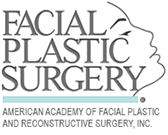
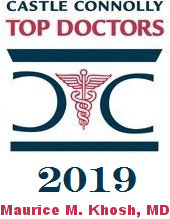
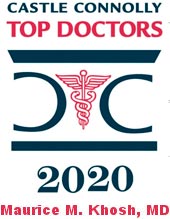





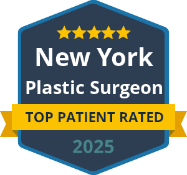
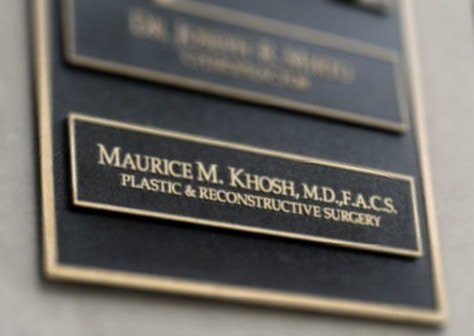

Words can not express my gratitude for his amazing life-changing work.
I had a tonsillectomy and a Neck Lump removal done on the same day.
Everything that you ever heard or read about tonsillectomy, is a dramatic over-exaggeration of people who can NOT tolerate pain.
I was so ready for a long misery and stressful recovery... Pffttt , turned out to be a really easy experience.
Dr. Khosh did an amazing job!!! Also taking in to consideration that I had 2 surgeries performed on the same day. I was out walking my dogs on day 2. Day 3 Walking dogs, doing some shopping and cooking... day 4 5 and 6 you get the picture. 0 limitations, just listened to my body and didnt overwork myself.
Just want to tell anyone and everyone who is either thinking of or NEEDS to have adult tonsillectomy done - Please don't even think twice. You get a perfect dose of painkillers, and they can solve all your pain-needs.
Dr.Khosh has an amazing warm and friendly personality, with a heart of gold and superb skills.
Susan - my comforting shoulder, and Christine - always happy and positive to brighten your day. I am forever grateful .